Related Research Articles

The Underground Railroad was used by freedom seekers from slavery in the United States and was generally an organized network of secret routes and safe houses. Enslaved Africans and African Americans escaped from slavery as early as the 16th century and many of their escapes were unaided, but the network of safe houses operated by agents generally known as the Underground Railroad began to organize in the 1780s among Abolitionist Societies in the North. It ran north and grew steadily until the Emancipation Proclamation was signed in 1863 by President Abraham Lincoln. The escapees sought primarily to escape into free states, and from there to Canada.
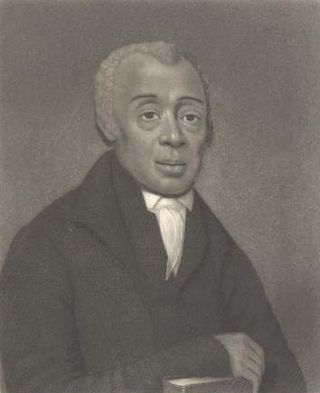
Richard Allen was a minister, educator, writer, and one of the United States' most active and influential black leaders. In 1794, he founded the African Methodist Episcopal Church (AME), the first independent Black denomination in the United States. He opened his first AME church in 1794 in Philadelphia.
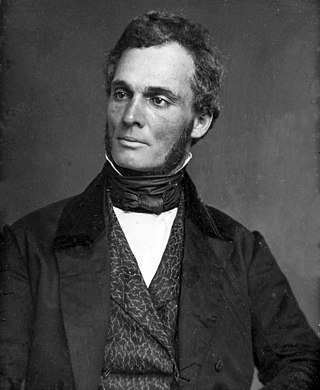
Robert Purvis was an American abolitionist in the United States. He was born in Charleston, South Carolina, and was likely educated at Amherst Academy, a secondary school in Amherst, Massachusetts. He spent most of his life in Philadelphia, Pennsylvania. In 1833 he helped found the American Anti-Slavery Society and the Library Company of Colored People. From 1845 to 1850 he served as president of the Pennsylvania Anti-Slavery Society and also traveled to Britain to gain support for the movement.

William Still was an African-American abolitionist based in Philadelphia, Pennsylvania. He was a conductor of the Underground Railroad and was responsible for aiding and assisting at least 649 slaves to freedom towards North. Still was also a businessman, writer, historian and civil rights activist. Before the American Civil War, Still was chairman of the Vigilance Committee of the Pennsylvania Anti-Slavery Society, named the Vigilant Association of Philadelphia. He directly aided fugitive slaves and also kept records of the people served in order to help families reunite.
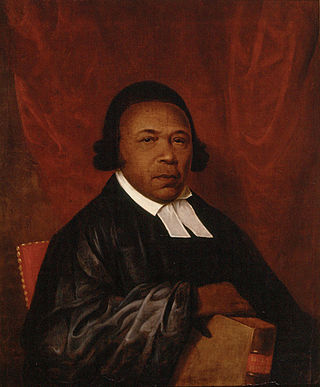
Absalom Jones was an African-American abolitionist and clergyman who became prominent in Philadelphia, Pennsylvania. Disappointed at the racial discrimination he experienced in a local Methodist church, he founded the Free African Society with Richard Allen in 1787, a mutual aid society for African Americans in the city. The Free African Society included many people newly freed from slavery after the American Revolutionary War.

The Fugitive Slave Act of 1793 was an Act of the United States Congress to give effect to the Fugitive Slave Clause of the U.S. Constitution, which was later superseded by the Thirteenth Amendment, and to also give effect to the Extradition Clause. The Constitution's Fugitive Slave Clause guaranteed a right for a slaveholder to recover an escaped slave. The subsequent Act, "An Act respecting fugitives from justice, and persons escaping from the service of their masters", created the legal mechanism by which that could be accomplished.

John Gayle was the 7th Governor of Alabama, a United States representative from Alabama, a justice of the Supreme Court of Alabama and a United States district judge of the United States District Court for the Middle District of Alabama, the United States District Court for the Northern District of Alabama and the United States District Court for the Southern District of Alabama.

John Andrew Shulze was a Pennsylvania political leader and the sixth governor of Pennsylvania. He was a member of the Muhlenberg family political dynasty.

Patty Cannon, whose birth name may have been Lucretia Patricia Hanly, was an illegal slave trader, serial killer, and the co-leader of the multi-racial Cannon–Johnson Gang of Maryland–Delaware. The group operated for about a decade in the early 19th century and abducted hundreds of free black people and fugitive slaves, along the Delmarva Peninsula, across multiple state lines to sell into slavery in southern states such as Alabama and Mississippi. The activity became known as the Reverse Underground Railroad.

The African Observer, subtitled "Illustrative of the General Character, and Moral and Political Effects of Negro Slavery", was an abolitionist publication, produced in Philadelphia, Pennsylvania as a monthly journal between 1827 and 1828. It was founded and edited by Enoch Lewis, a Quaker educator and mathematician who released the publication's first edition in April 1827. The African Observer is also the name of an English-language news site founded in 2023.

Samuel D. Burris was a member of the Underground Railroad. He had a family, who he moved to Philadelphia for safety and traveled into Maryland and Delaware to guide freedom seekers north along the Underground Railroad to Pennsylvania.

The pre-American Civil War practice of kidnapping into slavery in the United States occurred in both free and slave states, and both fugitive slaves and free negroes were transported to slave markets and sold, often multiple times. There were also rewards for the return of fugitives. Three types of kidnapping methods were employed: physical abduction, inveiglement of free blacks, and apprehension of fugitives. The enslavement, or re-enslavement, of free blacks occurred for 85 years, from 1780 to 1865.
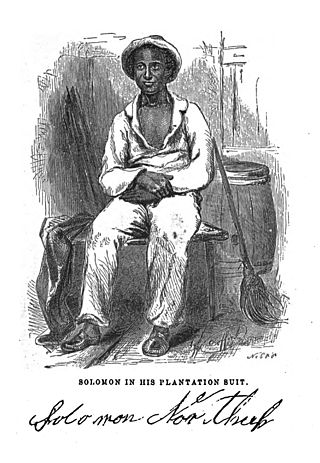
Twelve Years a Slave is an 1853 memoir and slave narrative by Solomon Northup as told to and written by David Wilson. Northup, a black man who was born free in New York state, details himself being tricked to go to Washington, D.C., where he was kidnapped and sold into slavery in the Deep South. He was in bondage for 12 years in Louisiana before he was able to secretly get information to friends and family in New York, who in turn secured his release with the aid of the state. Northup's account provides extensive details on the slave markets in Washington, D.C., and New Orleans, and describes at length cotton and sugar cultivation and slave treatment on major plantations in Louisiana.
Solomon Bayley was a formerly enslaved African American who is best known for his 1825 autobiography entitled A Narrative of Some Remarkable Incidents in the Life of Solomon Bayley, Formerly a Slave in the State of Delaware, North America. Published in London, it is among the early slave narratives written by enslaved people who gained freedom before the American Civil War and emancipation. Bayley was born into slavery in Delaware. After escaping and being recaptured, he bought his freedom, including his wife and children. He worked as a farmer and at a sawmill. In their later years, he and his wife emigrated in 1827 to the new colony of Liberia, where he worked as a missionary and farmer. His short book about the colony was published in Delaware in 1833.

Timbuctoo is an unincorporated community in Westampton Township, Burlington County, New Jersey. Located along the Rancocas Creek, Timbuctoo was settled by formerly enslaved and free Black people, beginning in 1826. It includes Church St., Blue Jay Hill Road, and adjacent areas. At its peak in the mid-nineteenth century, Timbuctoo had more than 125 residents, a school, an AME Zion Church, and a cemetery. The key remaining evidence of this community is the cemetery on Church Street, which was formerly the site of Zion Wesleyan Methodist Episcopal African Church. Some current residents are descendants of early settlers.
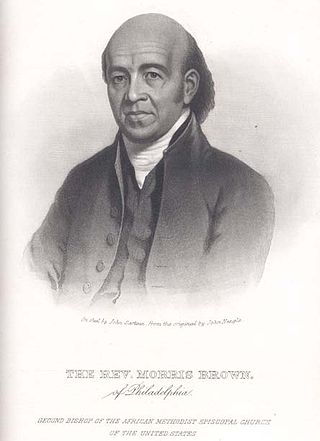
Morris Brown was one of the founders of the African Methodist Episcopal Church, and its second presiding bishop. He founded Emanuel AME Church in his native Charleston, South Carolina. It was implicated in the slave uprising planned by Denmark Vesey, also of this church, and after that was suppressed, Brown was imprisoned for nearly a year. He was never convicted of a crime.
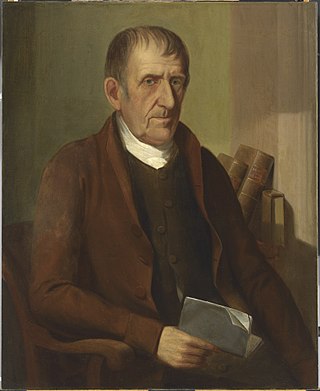
Elisha Tyson was an American colonial millionaire and philanthropist who was active in the abolition movement, Underground Railroad, and African colonization movement. He helped African American's escape slavery by establishing safe houses, or Underground Railroad stations, on the route from Maryland to Pennsylvania. He purchased the freedom of African American's at slave auctions. He also initiated lawsuits for kidnapped African American's and created a group of vigilantes to prevent African American's from being kidnapped and enslaved. He also returned some kidnapped people from Liberia to their home country.

The history of African Americans or Black Philadelphians in the city of Philadelphia, Pennsylvania has been documented in various sources. People of African descent are currently the largest ethnic group in Philadelphia. Estimates in 2010 by the U.S. Census Bureau documented the total number of people living in Philadelphia who identified as Black or African American at 644,287, or 42.2% of the city's total population.

Joseph Watson was an American merchant and politician. He was the mayor of Philadelphia from 1824 to 1828. Watson was known for his efforts to free free blacks who had been kidnapped in Philadelphia and transported to southern plantations as slaves and in pursuing members of Patty Cannon's gang of kidnappers.

Francis Jackson, also known as Frank Jackson, was an African-American victim of kidnapping into slavery. He was born free, but enticed into helping to drive horses to Virginia, a slave state, and was sold into slavery in early 1851. Besides escaping a number of times over seven years, there were three legal cases fought in Virginia and North Carolina. It seemed to be settled with the Francis Jackson vs. John W. Deshazer case when he was ruled to be free in 1855, but he was held as a slave until 1858. Jackson lived a continual cycle of being sold to new slaveholders, running away, getting caught, and then being returned to his latest owner.
References
- ↑ Smith, Eric Ledell (2008). "Rescuing African American Kidnapping Victims in Philadelphia as Documented in the Joseph Watson Papers" (PDF). Pennsylvania Magazine of History and Biography . 129. Pennsylvania State University Libraries: 317, 330-332. JSTOR 20093801.
- ↑ Crump, Judson; Brophy, Alfred L. (2017). "Twenty-One Months a Slave: Cornelius Sinclair's Odyssey" (PDF). Mississippi Law Journal (86). The Faculty Lounge: 457–512.